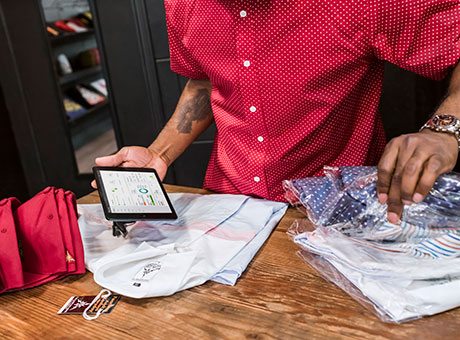The margin of safety measures how much of a buffer your business has after accounting for sales above the break-even point. The break-even point happens when your revenue equals your company’s costs. As long as you have a margin of safety that stays above the break-even point, your company makes money and turns a profit. The figure also serves as a way for investors to gauge whether or not investing in your company is a good bet.

How to Measure Your Margin of Safety
Calculating Your Break-Even Point
To find your margin of safety, you must first calculate your break-even point in a dollar amount. This means you need to know your fixed costs, variable cost per unit and price per unit. Your fixed costs represent the total you pay for things that don’t vary from month to month, including rent, salaries, insurance, and utilities such as internet and phone service. Variable costs per unit comprise costs that change from month to month, including supply expenses, labour, and utilities such as electricity and water. Your sales price per unit means how much you charge consumers for each product you sell them.
With that in mind, you first need to figure your break-even quantity by subtracting your variable costs per unit from your sales price per unit, and then dividing the total into your fixed costs. Let’s say you charge $10 for your sales price per unit, and each unit has a variable cost of $5. Your total fixed costs equal $100,000. This means you figure your break-even quantity by calculating your $10 sales price by unit minus your $5 in variable costs per unit, which gives you $5. You then divide the $5 into your $100,000 in fixed costs for a total of 20,000, which means you need to sell 20,000 units to break even. You then calculate your break-even point by multiplying your break-even quantity by your price per unit sold, or 20,000 times $10 for a break-even point of $200,000.
These formulas look like this:
- Fixed costs of $100,000 / ($10 sales price per unit – $5 variable costs per unit) = Break-even quantity of 20,000
- Break-even quantity of 20,000 x $10 price per unit sold = Break-even point of $200,000
Calculating Your Margin of Safety
Now that you have the break-even point, you can find your margin of safety by subtracting it from your revenue. Let’s say your company has $500,000 in sales and you know it has a $200,000 break-even point. You figure your margin of safety by subtracting the $200,000 break-even point from your $500,000 in revenue for a $300,000 margin of safety. This means your company can afford to lose $300,000 in sales before it loses money. This formula looks like: $500,000 in revenue – $200,000 break-even point = $300,000 margin of safety.
You can also calculate your margin of safety as a percentage. To do this, you divide your revenue into your margin of safety and then multiply the result by 100. This looks like: ($300, margin of safety / $500,000 in revenue) x 100 = 60% margin of safety. This percentage means that even if sales drop by 60%, your company still hits the break-even point.
How to Use the Margin of Safety in a Financial Analysis
A margin of safety helps you to gauge how well your sales perform. A high margin of safety means your company has protection against sudden drops in sales, while a small margin of safety may indicate financial risk for your small business. Looking at the margin of safety can lead you to adjust output, change prices, or alter your sales tactics.
For investors looking into your company, a margin of safety can give them an idea of your business’ current value versus its future value. A higher margin of safety generally means that an investment in your company should give investors a proper return.
QuickBooks Online has robust tools to run custom reports, such as a margin of safety calculation, to help you determine what goals to set for your business in the coming weeks and months. More than 4.3 million customers use QuickBooks. Join them today for free to help your business thrive.


